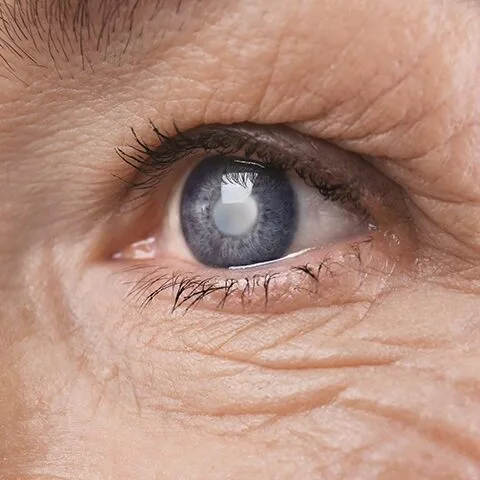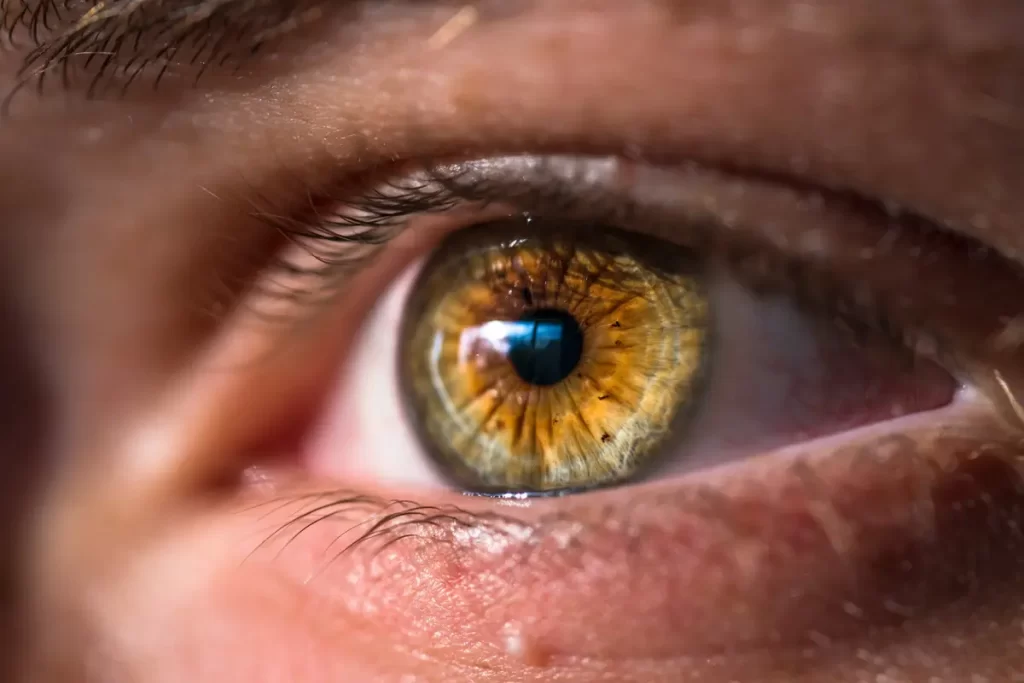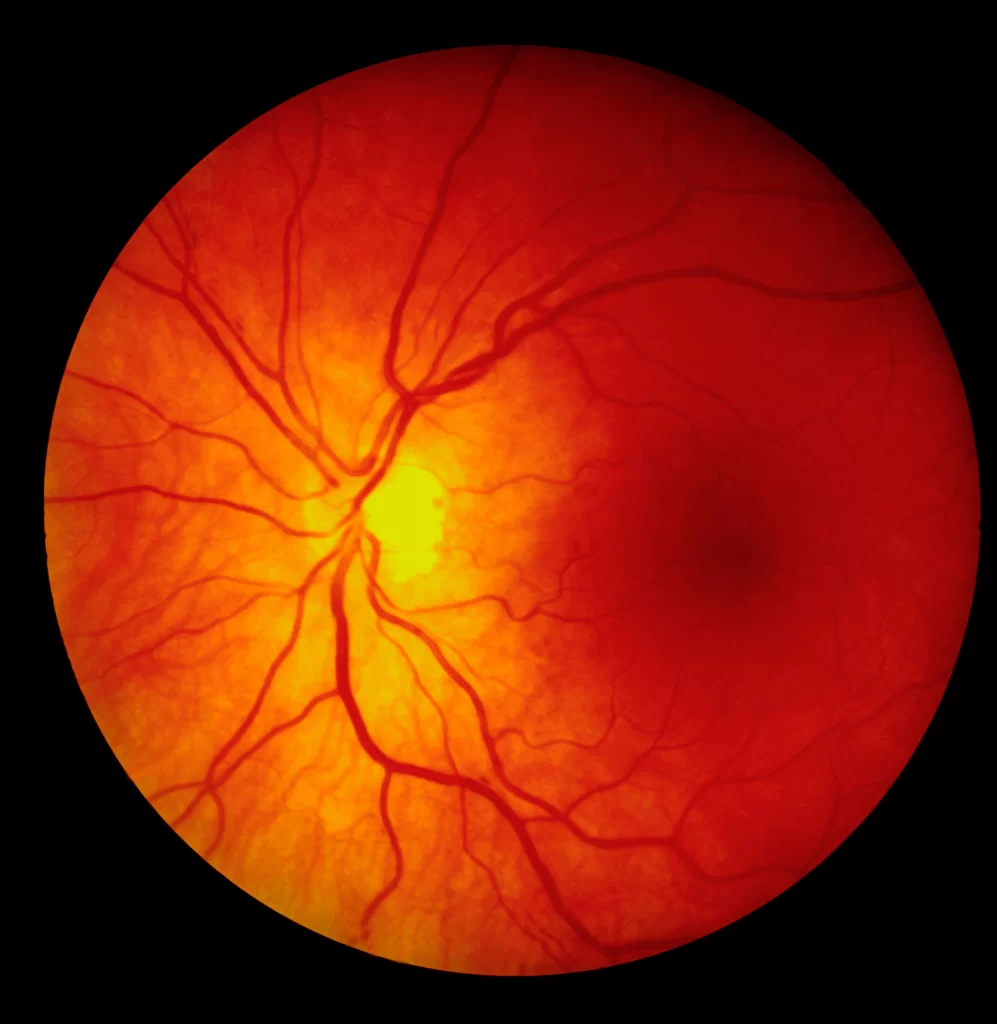More than half of the Australian population currently uses vision correction, and nearly everyone will require some sort of vision correction at some time in their life.
Detecting Eye Conditions
If you experience a strange shift in your eyesight, notice that everything appears dimmer, or see bursts of light, get an expert opinion right away from our team at Coady Davenport Optical. If you have indications that need immediate medical attention including discomfort, double vision, fluid leaking from the eye, and swelling, you should go to the emergency room.
Common Conditions
There are a number of ways that eye conditions can be detected. Common methods include looking for changes in the appearance of the eye, testing vision, and using specialised imaging techniques.
Some of the most common eye conditions that we come across include;


Refractive Errors
Refractive error is a disorder of the eye that makes it difficult to see clearly. It occurs when light passing through the eye does not focus correctly on the retina at the back of the eye, resulting in blurred vision.
Refractive error is the leading cause of vision impairment in Australia. Between 200,000 and 300,000 Australians are unable to see clearly as they should because of under-corrected refractive error or wearing outdated glasses, for example. Refractive error usually begins in infancy, when the eyes are still growing. Presbyopia is an exception; it is more common among those over the age of 40.

Cataract

Normal
Cataracts
A cataract is when the lens of the eye becomes clouded. The lens is usually clear, but with a cataract, it can become blurry. They often occur in older people, but younger people and even babies can get them too. If not treated, blindness can result from cataracts – although treatment is possible to successfully restore vision.
Cataracts develop slowly over time, and at first, you may not experience any symptoms. However, cataracts can cause your vision to become blurred or distorted, make you sensitive to light and glare, or give you the sense of seeing double.
Optic Nerve Disorders
The optic nerve is a bundle of over one million individual nerve fibres. Each fibre acts as a type of conduit, carrying visual information from the back of your eye (your retina) to your brain. However, if damage occurs to the optic nerve, it can cause issues with vision ranging from mild impairments to total blindness; this all depends on where exactly the damage occurred along the length of the nerve. Additionally, depending on which particular nerve is damaged, either one or both eyes may be affected.
There are many different types of optic nerve disorders, including:
- Glaucoma is an eye condition that, if not treated, can result in blindness. Glaucoma occurs when the pressure inside the eyes rises and harms the optic nerve. It’s believed that 300,000 Australians have glaucoma and half of them are unaware of it. The older you get, the more likely you are to get glaucoma; 1 in 8 individuals over 80 will develop this ailment at some point in their lives.
- Optic neuritis is when the optic nerve becomes inflamed. The most common causes are infections and illnesses that involve the immune system, like multiple sclerosis. However, there are other instances where the inflammation occurs without a clear cause.
- Optic nerve atrophy is when the optic nerve becomes damaged. This can be caused by a lack of blood flow to the eye, an underlying disease, an injury, or exposure to harmful chemicals.
- Optic nerve head drusen are collections of protein and calcium salts that accumulate in the optic nerve over time.

Normal Retina

Detached Retina

Macular Pucker
Retinal Disorders
Retinal disorders are any conditions that affect the retina, a layer of tissue in the back of your eye which senses light and sends images to your brain. The macula is located in the centre of this nerve tissue and provides clear central vision needed for activities such as reading or driving, as well as detail-oriented tasks. When retinal disorders affect this vital area, it can cause serious problems with your vision including blindness.
Examples of retinal disorders include:
- Retinal detachment is a medical emergency that occurs when the retina separates from the back of the eye.
- Retinoblastoma is cancer of the retina and occurs most often in young children.
- Macular pucker is a condition where scar tissue forms on the macula, which is the central part of the retina. This can cause blurry vision and make it difficult to see fine details.
- A macular hole is a small break in the macula that usually affects older adults.
- Floaters – cobwebs or specks in your field of vision
Macular Degeneration
Macular degeneration is a serious and irreversible eye disease that causes vision loss in the centre of your field of view. This makes it difficult to drive, read, and see people’s faces. In severe cases, the individual may become blind. It’s caused by injury to the eye’s nerves.
There are two main types of macular degeneration:
- Dry — This type of blindness develops slowly and causes gradual vision loss. It is caused by the gradual loss of cells in the retina, making it the most common form of blindness.
- Wet — Macular edema occurs when abnormal blood vessels develop beneath the macula and leak blood and fluid, which causes vision loss. This is the most severe form of macular degeneration.
The main symptom of macular degeneration can include having blurred vision, blind spots, reduced vision in the centre of your vision, trouble reading small print that isn’t improved with new glasses, problems judging distances, difficulty recognising faces, colours are less bright and seeing straight lines as wavy.
Diabetic Eye Problems
Diabetic retinopathy is a complication of diabetes that occurs when the tiny blood vessels in the retina expand and then bleed or leak fluid. This can happen in various locations throughout the body, resulting in issues such as kidney failure and inadequate circulation to the legs.
If you have diabetes, the Diabetes Australia foundation recommends that your eyes be examined as soon as you are diagnosed and then at least once every two years.
Treating diabetic retinopathy may be as simple as keeping your blood sugar and pressure in check. Medications can be used to reduce retina swelling and leaking blood vessels can be sealed with laser treatment. In individuals with more advanced Diabetes Retinopathy, surgery might be required.
Conjunctivitis
Conjunctivitis, commonly known as “pink eye,” is a condition where the white part of your eye becomes red or pink. Watery eyes, soreness, and itchiness are often present in conjunctivitis patients, sometimes with sticky yellow or white discharge. Conjunctivitis can result from a bacterial infection, viral infection, allergy, or exposure to irritants such as dust particles or chemicals.
It’s important to clean the eye with clean cotton wool moistened with warm tap water several times a day in all cases of conjunctivitis.
There’s no need for additional treatment when it comes to viral infections–they’ll go away on their own. However, if you have a bacterial infection, antibiotic eye drops or ointment may be necessary. And even after your symptoms subside, it’s crucial that you continue using the medicine for several more days.
- If you wear disposable contact lenses and have bacterial or viral conjunctivitis, you should discard any previously used lenses and replace your contact lens case immediately.
- For ‘extended-wear’ contact lenses, clean them based on the package directions. Also, avoid using contacts for until a week after your symptoms have gone away.
- Lastly, if you used any eye makeup or had eyelash extensions done during or right before an infection began, replace them.
